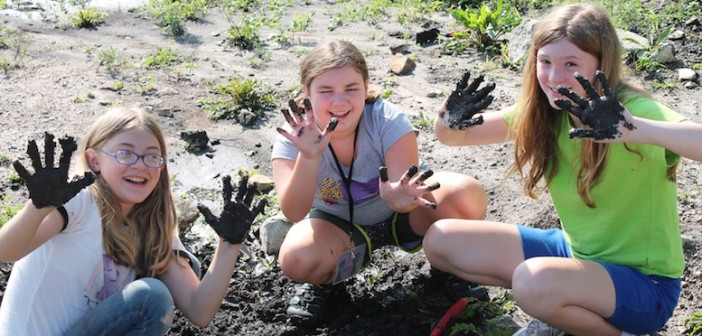By Sarah Colson
“I wish there were no child labor laws so I could work here,” ten-year-old Ben Davidson said Thursday as he headed toward the rich soil of a Gray Fossil Site digging area. And while most jobs wouldn’t inspire that kind of reaction from a middle school boy, the taste of paleontology Ben experienced while at Paleo Camp at the Gray Fossil Site last week did just that.
“I could dig all day,” he continued as he made his way out of the doors of the Natural History Museum, shovel in hand.
“Well when you’re 16, you can volunteer,” Camp Counselor Casey Crumly reassured him.
The camp, which meets for six different sessions divided by grade level throughout June and July, is designed for children grades Pre-K through 8th who are interested in all things paleontology, nature and science. Campers go out and dig in the mornings for fossils, rocks and minerals, and then are able to identify them in the lab, make casts of bones and do science-related experiments and crafts. The goal is to introduce kids to paleontology and teach them the process of discovering fossils and all the science and tediousness involved.
“One of the girls wants to be a paleontologist now, which is a big deal because we want those girls interested in STEM,” Crumly said, referring to the disciplines of science, technology, engineering and mathematics.
The kids dig in the site’s “spoils pile,” which is the leftover dirt from construction of the building that was dumped into one big pile. While the name implies sloppy seconds, the spoils pile is where the famous red panda, only the second of its kind to ever be found, was discovered in May 2012. Just last week, the kids found eight different fossils.
“It’s not really a spoils pile,” Education Coordinator Maegan Harrell said.
Harrell, along with Crumly and a second counselor, Amber Hite, said she is surprised every day by how much the kids, especially the older kids, understand about paleontology and the methods used to unearth fossils.
“A lot of the kids come in and are really interested in being a paleontologist or an archeologists,” Harrell said. “Then they come here and get to participate in everything that the paleontologists do here. They learn the techniques and it’s 24/7 science.”
Crumly said last week’s kids, about 20 5th and 6th graders, got to do a little bit more than the younger ones because instead of getting bored of digging in about five minutes, they all worked really hard for longer to find that special fossil.
“The older ones really start to understand the digging process more and that they’re not going to find something every day,” she said. Crumly also said how amazed she is by the amount they know before even starting camp. “They’re on a whole new level.”
Harrell’s favorite part of the camp is when someone finds a fossil. That happened last week, when camper Lisa Greene proved the lucky one.
“I found a leaf fossil and now I’m trying to dig up this fossilized wood,” Lisa told News and Neighbor as she carefully tried to unearth the fragile fossil with her friends.
“Digging is most exciting, especially when one kid finds a fossil,” Harrell said. “They just get so into it. Any time there’s dirt or gross stuff to dig into, they just love it.”
This year’s camp sessions are already full, but next on the agenda for the Gray Fossil Site is the exhibit, Trilobite Treasures: Anthropods of the Ancient Seas. The exhibit opens Saturday and runs through November. To learn more, visit etsu.edu/naturalhistorymuseum/.







